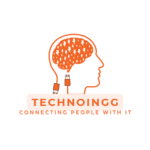In one of the most unlikely pairings, battery developers are working on combining generative AI with EV batteries, The two will help developers and EV makers revolutionize EV batteries.

By leveraging the power of artificial intelligence, EV battery makers, like Aionics, aim to revolutionize the electrolyte materials used in batteries and, in turn, transform the energy storage landscape.
Their innovative approach to catalyst discovery has captured the attention of investors, securing a total funding of $3.5 million, with a substantial $3.2 million seed round from UP. Partners.
Collaborating with industry giants like Porsche’s subsidiary Cellforce, Form Energy, Showa Denko (now Resonac), and Cuberg, Avionics has quickly gained a foothold in the battery technology sector.
Their process starts with a client’s battery performance profile, which serves as a wish list. Avionics employs AI-accelerated quantum mechanics to run experiments on an extensive database containing billions of known molecules. This capability allows them to consider a staggering 10,000 candidates every second, providing a powerful tool for innovation.
Battery makers like Aionics have incorporated generative AI models into their research to further enhance their efforts. These models, trained on existing battery materials data, are utilized to design new molecules tailored for specific applications, going beyond the confines of known molecules. This strategic advantage has the potential to unlock groundbreaking developments in battery technology.
To streamline their research, EV battery makers have harnessed specially designed programs. For example, Avionics uses software developed at Carnegie Mellon University’s Accelerated Computational Electrochemical Systems Discovery program. Dr. Venkat Viswanathan, a co-founder and chief scientist at Aionics, led this program.
EV battery makers have employed large language models (LLMs), such as GPT-4 from OpenAI, to assist their scientists in narrowing down the vast array of possible formulations. These LLMs have been trained on selected chemistry textbooks and scientific papers, which enables scientists to make informed decisions about molecule selection, enhancing the efficiency of the research process.
Austin Sendek, the CEO of Aionics, emphasized that this tool doesn’t replace scientists but empowers them to interact with information innovatively. As he pointed out, the chatbot feature focuses on seeking design principles from the vast body of scientific literature.
Once battery makers have screened and narrowed down the vast pool of candidates, the selected molecules, or those designed by generative AI, are sent to customers for validation. In the case of suboptimal results, they retry and conduct further trials to refine the selection. Once a winning molecule is identified, the battery makers work with manufacturing partners to scale up production for market deployment.









